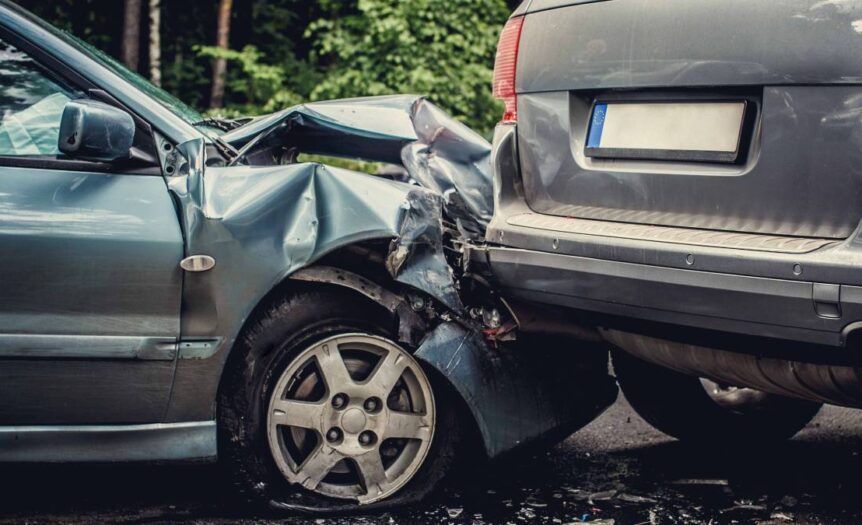Experiencing a car accident that leads to your vehicle being totaled is stressful and overwhelming. It plunges you into a whirlwind of decisions and actions that could significantly impact your financial standing and future mobility. Here are the most common mistakes you must avoid after totaling your car.
What Does “Totaled” Really Mean?
A car is “totaled” when the cost of repairing it exceeds a certain percentage of its value before the damage occurs, a threshold often set by insurance companies. This percentage varies but typically ranges from 50 to 70 percent. The assessment involves comparing the repair costs against the car’s actual cash value (ACV), which factors in depreciation. In such cases, insurance companies deem it financially impractical to repair the vehicle, opting to pay out the car’s ACV minus any deductible.
Severe flooding or damage compromising the vehicle’s structural integrity can also lead to a car being declared a total loss. If your car isn’t a total loss, replacing the damaged parts with remanufactured components and fixing the entire vehicle is the most practical solution.
Mistake I: Not Understanding Your Insurance Coverage
Comprehensive coverage protects against damage not resulting from collisions, such as theft, vandalism, natural disasters, and encounters with animals. In contrast, collision coverage covers damages from accidents, whether with another vehicle or an immovable object, like a tree or a pole. Knowing which coverage applies to your situation directly impacts the insurance payout you can expect. For instance, if your car is totaled due to a flood (a scenario covered under comprehensive insurance), not having comprehensive coverage means you won’t receive a payout.
Mistake II: Not Completing Payments on Your Totaled Car
Suppose your car is declared a total loss, and the insurance payout does not cover the full amount owed on the loan. In that case, you are still liable for the remaining balance, a situation commonly referred to as being “upside down” on your loan. This discrepancy occurs because the insurance company pays out the car’s ACV, which is the amount you owe. Consequently, if the ACV is less than the loan balance, you must continue making payments until the debt is fully settled, even though you no longer possess the vehicle.
People with gap insurance—policies designed for these exact situations—can avoid out-of-pocket expenses entirely. One advantage of car leasing is that many such agreements include gap insurance policies!
Mistake III: Not Negotiating With Your Insurance Company
Neglecting to negotiate with your insurance company can result in accepting a settlement that may not fully reflect the value of your totaled vehicle. Many car owners are unaware that the initial offer from an insurance company is not final and they can contest it.
Conduct research on the car’s ACV and consider factors like model, age, mileage, and condition to determine how much you are owed. Without engaging in negotiation, you might inadvertently settle for less, which could impact your financial situation, especially when seeking a replacement vehicle.
Totaling your car can be a stressful and confusing experience, but avoiding these common mistakes can help you navigate the aftermath. Trust in the process, and remember that each step you take moves you closer to resolving the situation.










 Deering Estate
Deering Estate
 Massage Envy South Miami
Massage Envy South Miami
 Calla Blow Dry
Calla Blow Dry
 My Derma Clinic
My Derma Clinic
 Sushi Maki
Sushi Maki
 Sports Grill
Sports Grill
 The Healthy Kitchen
The Healthy Kitchen
 Golden Rule Seafood
Golden Rule Seafood
 Malanga Cuban Café
Malanga Cuban Café

 Kathleen Ballard
Kathleen Ballard
 Panter, Panter & Sampedro
Panter, Panter & Sampedro
 Vintage Liquors
Vintage Liquors
 The Dog from Ipanema
The Dog from Ipanema
 Rubinstein Family Chiropractic
Rubinstein Family Chiropractic
 Your Pet’s Best
Your Pet’s Best
 Indigo Republic
Indigo Republic




 ATR Luxury Homes
ATR Luxury Homes


 2112 Design Studio
2112 Design Studio
 Hamilton Fox & Company
Hamilton Fox & Company
 Creative Design Services
Creative Design Services
 Best Pest Professionals
Best Pest Professionals
 HD Tree Services
HD Tree Services
 Trinity Air Conditioning Company
Trinity Air Conditioning Company
 Cisca Construction & Development
Cisca Construction & Development
 Mosquito Joe
Mosquito Joe
 Cutler Bay Solar Solutions
Cutler Bay Solar Solutions


 Miami Royal Ballet & Dance
Miami Royal Ballet & Dance
 Christopher Columbus
Christopher Columbus
 Pineview Preschools
Pineview Preschools
 Westminster
Westminster
 Carrollton
Carrollton
 Lil’ Jungle
Lil’ Jungle
 Frost Science Museum
Frost Science Museum
 Palmer Trinity School
Palmer Trinity School
 South Florida Music
South Florida Music
 Pinecrest Orthodontics
Pinecrest Orthodontics
 Dr. Bob Pediatric Dentist
Dr. Bob Pediatric Dentist
 d.pediatrics
d.pediatrics
 South Miami Women’s Health
South Miami Women’s Health

 The Spot Barbershop
The Spot Barbershop
 My Derma Clinic
My Derma Clinic




 Miami Dance Project
Miami Dance Project

 Rubinstein Family Chiropractic
Rubinstein Family Chiropractic
 Indigo Republic
Indigo Republic

 Safes Universe
Safes Universe
 Vintage Liquors
Vintage Liquors
 Evenings Delight
Evenings Delight





 Atchana’s Homegrown Thai
Atchana’s Homegrown Thai
 Baptist Health South Florida
Baptist Health South Florida

 Laser Eye Center of Miami
Laser Eye Center of Miami
 Visiting Angels
Visiting Angels
 OpusCare of South Florida
OpusCare of South Florida

 Your Pet’s Best
Your Pet’s Best





 HD Tree Services
HD Tree Services
 Hamilton Fox & Company
Hamilton Fox & Company


 Creative Design Services
Creative Design Services